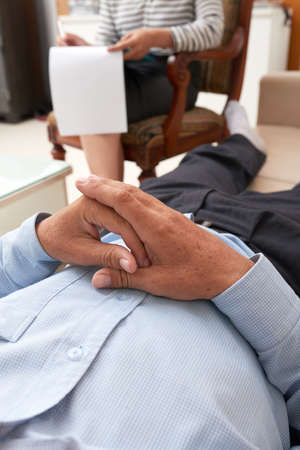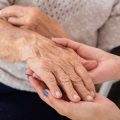Understanding Your Heart Attack and Medical Follow-up
What Happens During a Heart Attack?
A heart attack, or myocardial infarction, happens when blood flow to part of your heart muscle is blocked. This usually occurs due to a buildup of cholesterol and fatty deposits (called plaque) in your coronary arteries. When a plaque ruptures, it can form a blood clot that stops blood from reaching your heart muscle. Without oxygen-rich blood, that part of your heart can get damaged quickly.
Common Symptoms of a Heart Attack
| Symptom | Description |
|---|---|
| Chest pain or discomfort | Pressure, squeezing, fullness, or pain in the center or left side of the chest |
| Shortness of breath | Trouble breathing with or without chest discomfort |
| Pain in other areas | Pain or discomfort in one or both arms, the back, neck, jaw, or stomach |
| Cold sweat, nausea, lightheadedness | Feeling unusually tired, breaking out in a cold sweat, feeling sick to your stomach, or dizzy |
The Importance of Understanding Your Diagnosis
Knowing exactly what happened during your heart attack helps you and your healthcare team make the best plan for your recovery. Different types of heart attacks may require different treatments and follow-up care. Ask your doctor questions if you’re unsure about anything—they want you to be informed and involved in your care.
Key Questions to Ask Your Healthcare Provider:
- What type of heart attack did I have?
- What caused my heart attack?
- Are there any long-term effects I should watch for?
- What medications will I need to take?
- What lifestyle changes should I make?
- How often do I need follow-up appointments?
The Standard Procedure for Follow-up Care in the US Healthcare System
After you leave the hospital, ongoing care is crucial for a strong recovery and preventing future problems. In the United States, post-heart attack follow-up usually includes:
| Step | Description |
|---|---|
| Primary Care Visit | Your primary doctor will review your hospital stay, check on your medications, and coordinate further care. |
| Cardiology Appointments | You’ll see a heart specialist (cardiologist) to monitor your heart’s healing and adjust medications as needed. |
| Cardiac Rehabilitation Program | A supervised program that includes exercise, education about healthy living, and counseling to reduce stress. |
| Lab Tests & Imaging | Your doctor may order blood tests or imaging (like an echocardiogram) to track your recovery progress. |
| Lifestyle Counseling | You may meet with dietitians or counselors to help with nutrition, quitting smoking, managing diabetes, or mental health support. |
Typical Timeline for Follow-Up Visits:
- Within 1 week: First follow-up with your primary care provider or cardiologist after discharge.
- 2-6 weeks: Additional visits based on individual needs and how you’re feeling.
- Ongoing: Regular check-ups every few months or as recommended by your healthcare team.
This structured approach helps make sure you get the support and guidance you need at every stage of recovery.
2. Building Your Cardiac Rehabilitation Plan
Introduction to Cardiac Rehab Programs in the US
After a heart attack, one of the most important steps you can take toward recovery is joining a cardiac rehabilitation (cardiac rehab) program. In the United States, these programs are widely recommended and designed to help you regain your strength, reduce future heart risks, and return to everyday activities safely.
How Cardiac Rehab Programs Are Structured
Cardiac rehab programs in the US typically follow a structured approach that takes place in three main phases:
| Phase | Description | Where It Happens |
|---|---|---|
| Phase 1: Inpatient Rehab | Begins in the hospital right after your heart attack; focuses on gentle movement and education about heart health. | Hospital setting |
| Phase 2: Outpatient Rehab | Starts soon after leaving the hospital; involves supervised exercise, nutrition counseling, and risk factor management. | Specialized rehab centers or clinics |
| Phase 3: Maintenance & Support | Long-term lifestyle changes and ongoing support to keep your heart healthy. | At home or community-based programs |
Main Components of a US Cardiac Rehab Program
- Supervised Exercise Training: Safe physical activity tailored to your needs and progress.
- Heart-Healthy Education: Learning about nutrition, stress management, medication, and reducing risk factors like high blood pressure or cholesterol.
- Counseling & Emotional Support: Addressing anxiety, depression, and making sustainable lifestyle changes.
- Regular Progress Monitoring: Tracking your improvements with the help of your care team.
The Multidisciplinary Team: Who’s on Your Side?
Your recovery is supported by a dedicated group of healthcare professionals. Here’s a look at who may be involved in your cardiac rehab journey:
| Team Member | Role in Your Recovery |
|---|---|
| Cardiologist | Oversees medical aspects and monitors your heart health. |
| Nurses & Nurse Practitioners | Assist with daily care, education, and progress tracking. |
| Physical Therapists/Exercise Specialists | Create and supervise safe exercise plans tailored to you. |
| Dietitians/Nutritionists | Help develop meal plans that are good for your heart. |
| Mental Health Counselors/Social Workers | Support emotional well-being and help manage stress or anxiety related to recovery. |
The Goal: Optimizing Your Recovery Journey
The structure of cardiac rehab programs in the US ensures that you get personalized support every step of the way. By working closely with this multidisciplinary team, you’ll be equipped with the knowledge, skills, and confidence needed for a healthier life after a heart attack.
![]()
3. Lifestyle Modifications for Heart Health
Adopting heart-healthy lifestyle changes is essential for recovery after a heart attack and for preventing future cardiac events. In the US, following evidence-based advice on diet, exercise, quitting smoking, managing stress, and building healthy habits can make a real difference in your long-term heart health.
Diet: Eating for a Healthy Heart
A balanced diet is crucial. The American Heart Association recommends focusing on:
| Food Group | What to Choose | Tips for US Lifestyles |
|---|---|---|
| Fruits & Vegetables | Fresh, frozen, or canned (low sodium) | Add baby carrots or apple slices as snacks; choose salads with meals |
| Whole Grains | Oatmeal, brown rice, whole-wheat bread | Swap white bread for whole grain; try oatmeal instead of sugary cereals |
| Lean Proteins | Fish, skinless poultry, beans, tofu | Grill chicken or fish instead of frying; add beans to soups and salads |
| Healthy Fats | Olive oil, avocado, nuts (in moderation) | Use olive oil in place of butter; snack on a small handful of unsalted nuts |
| Sodium & Sugar | Limit processed foods and sugary drinks | Check nutrition labels; opt for water or unsweetened tea over soda |
Exercise: Getting Active Safely
Regular physical activity helps strengthen your heart. Most Americans are encouraged to aim for at least 150 minutes of moderate aerobic exercise per week, such as brisk walking or cycling. Always talk to your healthcare provider before starting or changing your routine after a heart attack.
- Start slow: Begin with short walks and gradually increase duration and intensity.
- Make it fun: Try dancing, swimming, or join group fitness classes for motivation.
- Sneak in movement: Take the stairs, park farther away at stores, or walk during TV commercials.
Quitting Smoking: A Must for Heart Recovery
If you smoke, quitting is one of the best things you can do for your heart. In the US, resources like 1-800-QUIT-NOW and free quit-smoking apps are available to help you kick the habit. Consider joining support groups or talking to your doctor about medications that can assist with cravings.
Managing Stress: Finding What Works for You
Chronic stress can harm your heart health. Effective ways to manage stress include:
- Meditation or mindfulness apps (like Headspace or Calm)
- Yoga or gentle stretching routines at home or in local studios
- Pursuing hobbies—gardening, reading, music, or volunteering in your community
- Talking with friends, family members, or professional counselors when needed
Building Heart-Healthy Habits into Everyday Life
A few practical strategies tailored to American lifestyles:
- Create a routine: Set reminders on your phone for meals and exercise.
- Dine out wisely: Ask for dressings and sauces on the side; choose grilled over fried options.
- Cook at home more often: Use meal kits focused on healthy recipes if you’re short on time.
- Track progress: Use wearable devices or smartphone apps to monitor activity and nutrition.
- Celebrate small wins: Reward yourself for positive changes—maybe a movie night or a new book!
The road to recovery is ongoing. These lifestyle modifications not only support healing but also empower you to live a fuller, healthier life after a heart attack.
4. Medications and Managing Risk Factors
Commonly Prescribed Medications After a Heart Attack
After a heart attack, most people in the US are prescribed several medications to help prevent another event and manage their heart health. Here’s a quick overview of common post-heart attack medications:
| Medication Type | Purpose | Common Examples |
|---|---|---|
| Aspirin | Prevents blood clots | Bayer, Ecotrin |
| Beta Blockers | Lowers heart rate and blood pressure | Metoprolol, Carvedilol |
| Statins | Lowers cholesterol levels | Atorvastatin, Rosuvastatin |
| ACE Inhibitors/ARBs | Relaxes blood vessels, lowers blood pressure | Lisinopril, Losartan |
| P2Y12 Inhibitors (Antiplatelets) | Prevents new clots from forming | Clopidogrel, Ticagrelor |
Tips for Medication Adherence
- Set Reminders: Use phone alarms or apps to remind you when it’s time to take your medication.
- Pill Organizers: Weekly pill boxes can help you keep track of your daily doses.
- Tie It to a Routine: Take your meds at the same time as another daily habit, like brushing your teeth or eating breakfast.
- Stay Informed: Know what each medication does and why you’re taking it—ask your pharmacist or healthcare provider if you’re unsure.
- Refill Early: Don’t wait until you run out; set up auto-refills if your pharmacy offers them.
- Talk About Side Effects: If you notice anything unusual after starting a new medication, call your doctor before stopping on your own.
Monitoring and Managing Blood Pressure, Cholesterol, and Diabetes
Blood Pressure Management
- Home Monitoring: Use an at-home blood pressure monitor to check your numbers regularly. Most pharmacies in the US sell affordable digital monitors.
- Aim for Healthy Numbers: The American Heart Association recommends a goal of less than 130/80 mmHg unless otherwise directed by your doctor.
- Lifestyle Tips: Reduce salt intake, stay active, manage stress, and follow any dietary advice given by your care team.
Cholesterol Control
- Get Regular Labs: Your doctor will check your cholesterol with blood tests—usually every few months at first.
- Diet and Exercise: Eat more fruits, veggies, whole grains, and lean protein. Limit saturated fats and processed foods.
- Meds Matter: Statins are commonly used in the US for heart attack survivors—keep taking them as prescribed even if you feel fine.
Managing Diabetes (If Applicable)
- Check Your Blood Sugar: If you have diabetes, monitor your blood glucose as recommended by your doctor or diabetes educator.
- EAT SMART & MOVE MORE: A balanced diet plus regular activity helps control blood sugar levels and supports overall heart health.
- Meds & Insulin: Take all diabetes medications as prescribed—don’t skip doses or change amounts without consulting your healthcare provider.
Your Healthcare Team is There to Help!
If you have questions about your medications or how to manage risk factors like high blood pressure, cholesterol, or diabetes after a heart attack, don’t hesitate to reach out to your doctor, nurse practitioner, or pharmacist. They want to see you thrive during recovery!
5. Emotional Support and Community Resources
The Importance of Mental Health Support After a Heart Attack
Recovering from a heart attack isn’t just about physical health—your mental and emotional wellbeing matters, too. Many people experience anxiety, fear, sadness, or even depression after such an event. Recognizing these feelings is the first step to managing them effectively. In the United States, healthcare providers often encourage open conversations about mental health and recommend seeking professional help if you feel overwhelmed or persistently down.
Dealing With Anxiety and Depression
Anxiety and depression are common after a heart attack, but they’re treatable. Simple steps like talking with loved ones, practicing relaxation techniques (such as deep breathing or meditation), and setting small daily goals can help. If these feelings don’t improve or interfere with your daily life, reaching out to a counselor or psychologist is a smart move. Many insurance plans in the US cover mental health services.
Common Signs of Emotional Distress
| Sign | Description |
|---|---|
| Persistent Sadness | Feeling down most days for two weeks or more |
| Anxiety | Constant worry or panic attacks that disrupt daily life |
| Irritability | Easily frustrated or angry over small things |
| Sleep Issues | Trouble falling asleep or sleeping too much |
| Lack of Interest | No motivation for activities you used to enjoy |
Support Groups in the US
Joining a support group can make a big difference during recovery. Support groups offer a safe place to share experiences, ask questions, and learn from others who’ve been through similar situations. In the US, many hospitals host cardiac support groups either in person or online. Organizations like the American Heart Association also provide virtual communities where patients and families can connect nationwide.
Popular Support Group Options
| Name | Format | How to Join |
|---|---|---|
| Mended Hearts | In-person & Online Meetings | Visit Mended Hearts Website |
| American Heart Association Support Network | Online Forum & Webinars | Sign up at AHA Support Network |
| Local Hospital Groups | In-person Sessions | Ask your hospital’s patient coordinator for schedules |
Resources for Patients and Families Navigating Recovery
The journey after a heart attack involves both patients and their loved ones. In the US, several resources are available to help everyone involved:
- Counseling Services: Most hospitals have social workers who can refer you to local therapists specializing in cardiac recovery.
- Educational Workshops: Many community centers offer classes on heart-healthy living and stress management.
- Online Tools: The CDC (Centers for Disease Control and Prevention – Heart Disease Resources) offers guides, checklists, and videos for ongoing education.
- Crisis Hotlines: For immediate emotional support, call or text 988—the Suicide & Crisis Lifeline in the US.
- Family Counseling: Some organizations provide counseling specifically for family members coping with changes after a loved one’s heart attack.
Your Path Forward: You’re Not Alone!
If you’re feeling uncertain or overwhelmed during your recovery, remember that reaching out is a sign of strength—not weakness. The right emotional support can make all the difference as you heal physically and mentally after a heart attack.


